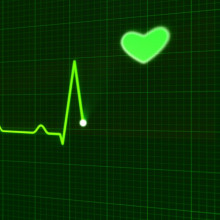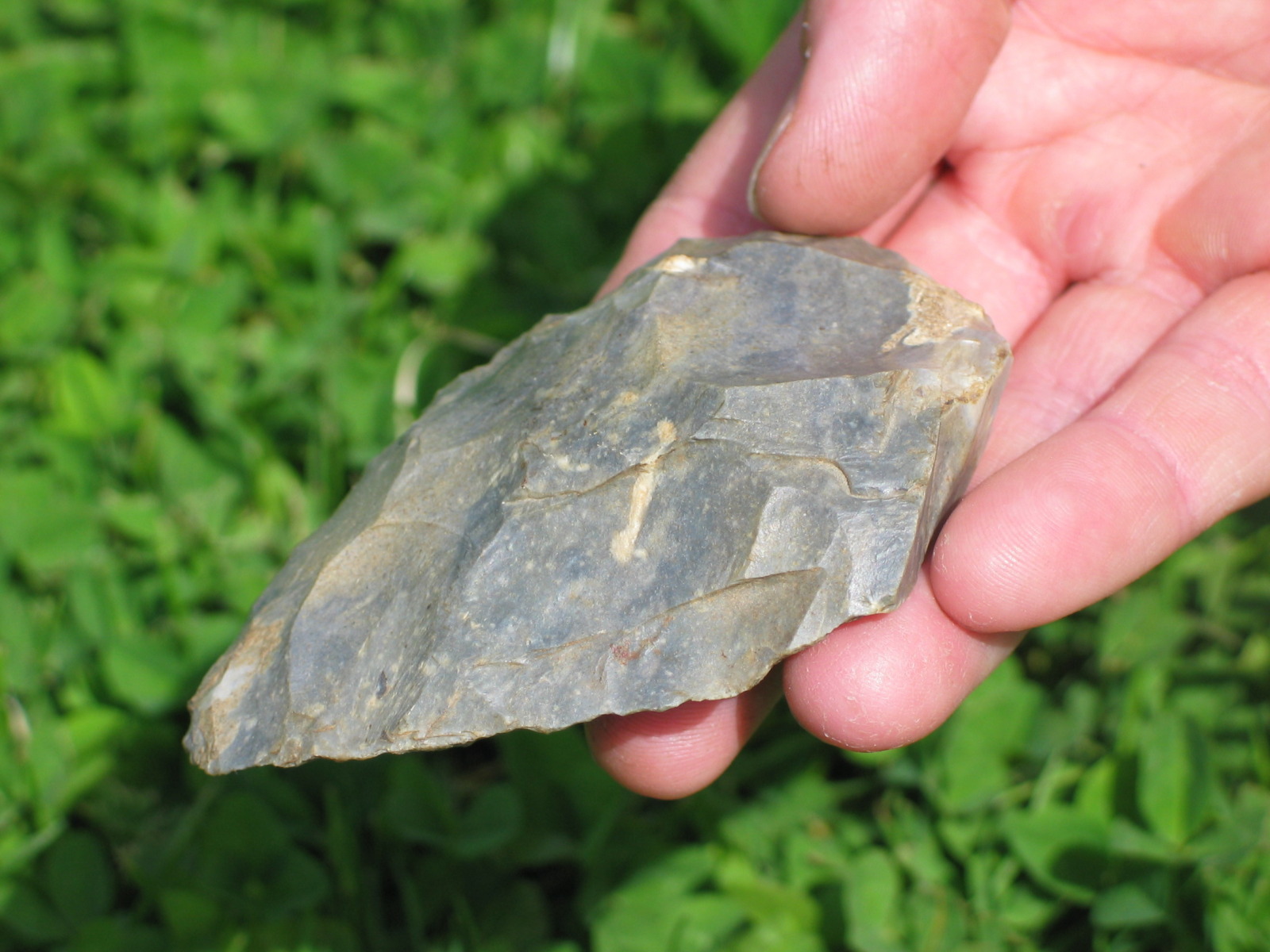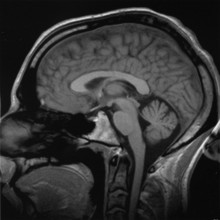What happens if you're exposed to the vacuum of space? Is using a mobile phone on a flight safe? Which is more contagious - a cough or a sneeze? This week we answer your sticky science questions, such as what makes Jam set? And how does ironing work? Plus, we meet the very first lumberjacks, locate the dark matter in our locality and find out how a small electric pulse can stop a seizure in its tracks...
In this episode

Do we have a finite number of heartbeats?
Victoria Gill and Chris Smith took a look at this question...
Victoria - I don’t think you can say that there's a finite number of heartbeats, but there's certainly an average of times a heart will beat during a human life span, just because there's an average human life span and there's about an average number of times that the heart will beat, because it keeps going generally at this continual speed. But I think you're quite right about getting this trade-off between fitness and slowing down your resting heart rate because you're strengthening your heart. Your heart is a muscle and by working it out, you're making it stronger, and you're making it more efficient. It doesn’t have to work so fast and so hard to pump the blood flow through, and if you eat a healthy diet and don’t have all the nasty fats that have lined in your arteries, then you give that an extra boost as well. It can be much more efficient and keep your body well circulated with lovely oxygenated blood. But during the average life span, the human heart beats around about 2.5 billion times. That’s the number that’s thrown around, but that’s just about an average life span, so don’t worry about running out of heartbeats at all! I don’t think that’s anything that you need to be concerned about and certainly keep up that fitness because the stronger your heart generally, the better shape you'll be in for a lovely long life.
Chris - I think the other point that he’s making which is an interesting one is, if you do exercise, yes, when you're exercising, your heart rate obviously goes up quite a lot to sustain the output that you need. But then because you're getting a fitness improvement, then the heart thus becomes larger to accommodate the exercise regime, it therefore can beat fewer times because it’s working this hard, because it’s more pumping more blood with every beat. So actually, the point he’s making is that the area under the curve, the number of beats it ends up doing despite the augmented number of beats during the exercise is actually probably going to be lower.
Victoria - Yeah, absolutely and having that fitness and being able to work out your heart and make it much more efficient is certainly a beneficial thing. I don’t know if you saw just in the closing days of the Olympics, there was a great article on Bradley Wiggins heart and the amazing lengths that it has to go through and the strength it’s built up to. They describe this left ventricle as "bucket-like" which is apparently several times larger than your average person. So, it clearly does something really, really good for your performance and probably your longevity too.
Chris - An Olympic athlete actually has a lower maximum heart rate than an untrained, unfit person like me because their heart has got so big because of the intense training regime that it can pump a huge amount with every beat, but simultaneously, in order to fill it takes a larger amount of time. So therefore, you can't run it as fast because it’s always going to be limited by trying to fill itself up. So your Olympic athlete actually has a lower maximum heart rate than an untrained person, but then the amount of blood they're actually shifting could be maybe 30 litres a minute from their heart compared with an untrained person like me might manage 25 if they're lucky.
How can I intrepret my cat's feelings?
Victoria - It sounds like Teddy is a very, very contented cat because lying on its back like that is a very submissive posture which just means it very much trusts you, Mike, and really wants to be around you. You're head of the pecking order. But what that opening and closing of paws is about is actually, that's a feeding kind of stimulation. So when cats are kittens and they're suckling from their mothers, they actually paw at their mother's teets to try and stimulate lactation. That movement actually stimulates the milk flow. So that's what your cat is doing there. It's a reflex action and it's also a sign of complete contentment, so I think you have a very happy cat.
Mike - It waits for me and runs in the living room when I get up, and lies down waiting for me.
Chris - There was a story a few years ago by a lady at the University of Sussex. Her name was Karen McComb and she was working on something totally unrelated to this and she kept getting woken up in the middle of the night by her cat. It used to come and scratch at the door to say, "I want some attention" or "let me out!" or whatever. She thought she could detect a subtle difference in the purr of the cat when it wanted something so she actually recorded it, and took it into the lab. And she recorded the cat's sounds into a computer, looked at the audio spectrum and she saw that the cat's purr running along between 50 and 100 hertz was punctuated by these cycles of 300 hertz. That's the same frequency a baby cries at and so she theorised that what's going on is that the cat has learned to plug into your sensitive side, mimicking a baby so that you pay it some attention.
Can black holes lose enough mass to stop being black holes?
Dominic - There is a process by which black holes can lose mass and what happens is that over time, in the vacuum of space, there's a quantum process by which particles and anti-particles are popping out of the vacuum of space. If one of those two particles, the anti-particle, falls into the black hole and the other particle, the real mass particle, does not fall into the black hole then you've got a particle out of the black hole. The anti-particle has fallen in and will annihilate with matter inside the black hole, and that causes the black hole to lose mass.
This is a very slow process for the kinds of astrophysical black holes you see in the centres of galaxies and that form out of supernova explosions. But if you were, for example, to take a small black hole - I did a calculation a while back for one the size of a double decker bus - then this is actually quite a fast process and a black hole the size of a double decker bus would last about 1000th of a second before it would just evaporate into the vacuum of space. But obviously, real black holes are around about the mass of the Sun or many million times that mass and they will lose mass very slowly compared to the amount of mass they have.
Do all thunderstorms have lightning?
Chris - I think that actually, if you're going to have a thunderstorm, that means by definition you're hearing thunder. So if you're hearing thunder, you're hearing a shockwave, and what's happened during a thunderstorm to make that shockwave is that something has heated a patch of the air to a very high temperature. This has made the air expand supersonically, making a shockwave that then comes towards you through the air as a rippling roll of thunder. You can't really have the heating of the air without some kind of an electrical discharge which is what the lightning is. In fact, I think when people have done calculations and measurements, a lightning bolt actually registers a temperature of about 30,000 degrees C which is 5 or 6 times hotter than the surface of the Sun. So I don't think you can have a thunderstorm without a lightning bolt because you wouldn't hear any thunder because something, some discharge has got to actually drive that happening in the first place. I think it's probably just that the lightning is masked behind a layer of cloud or something and you just don't see it.

How much do dogs understand when humans talk to them?
Victoria Gill took on this question...
Victoria - Well, it seems that there's actually been a number put on the number of words that a dog can understand, a bit like the human lexicon I guess, and that's approximately 200. That was a dog called Rico which sadly passed away in 2008. But Rico was studied at the Max Planck Institute for Evolutionary Anthropology in Leipzig and they do a lot of work on this stuff, understanding how dogs have adapted to human culture and language. But that seems to be the maximum and it does really vary according to breed. Rico was a border collie and that's a working dog that's been bred and trained for its ability to be able to understand and work with a man, to run sheep and respond to those commands. So that's something that's been bred into that line, but when you have breeds that are maybe bred for their appearance, they might be suffering a little bit on the intellect.
Chris - Certainly, my mum had a dog. Unfortunately, he has now died as well, but he had an exceptional vocabulary and the other thing that they were saying dogs seem to be able to do is - in the experiments with Rico - they would have him in a room and say, "Got and get a toy of type X from the room next door" and then not include that toy in the line-up of toys that he did know the name for and he would assume that because he didn't know what that toy was named and he had been told to go and get things but he didn't have the name for, that must be the one, and that's the same sort of learning process as the 3-year-old child shows. It's quite extraordinary that they're able to do this, but then on the other hand, given that they are mammals and so, we have common ancestors, is it so surprising?
Victoria - It is extraordinary. I think it does show a level of adaptation and how quickly it's been bred into dogs - into their breeding lines - that they can cope with this sort of communication with humans. The other thing that they've shown in these kinds of tests is that there seems to be a real connection between the dog and the owner. So, the specific human that the dog's associated with that they're more likely to understand fully the commands and even respond to that facial expressions - the dog's owner and they recognise that person.
What happens if you're exposed to the vacuum of space?
Dominic - That's an interesting one because if you read books, what the books will often tell you is that the person will explode in the vacuum of space. I've been thinking about this for a little while, and I'm not actually sure I quite believe that, because something you will often hear in the news is that aircrafts have depressurised at altitude. There was a case over Australia a few years ago where a plane developed a hole when it was flying at about 40,000 ft. and the pressure up there is only about 20% of the pressure on the surface of the Earth. So that's about 80% of going to the vacuum of space and everyone on the aircraft survived. People routinely survive aircraft depressurisations. It's quite unpleasant, but you don't explode. So, my guess will be that you will pass out quite quickly unless you have a source of oxygen. The air will obviously sucked out of your lungs and oxygen from your bloodstream will start to leach out into your lungs. You'll get something very similar to bends, like divers get, and it will all be very unpleasant. But as long as you quickly restored pressure, I think you might survive.
Will ice melt in a cold, dark vacuum?
Chris - [In our previous question,] you're saying that your body fluids exposed to a very low pressure will boil and therefore, you will lose them as a gas. So if I had some ice in space, what happens to that? Does that boil off as well?"
Dominic - Yes. Boil isn't actually quite the right word because boiling is going from a liquid state to a gaseous state. In fact, the very low temperatures in the dark coldness of space, there is no liquid state. You go straight from solid ice to vapour. So the word is 'sublime' for going from a solid to a gas, but ice particles will tend to sublime into the gaseous state, yes.

13:44 - The First Lumberjacks
The First Lumberjacks
Scientists at Tel Aviv University have discovered and analysed some remarkable stone age tools that they say are the first evidence of humans felling trees to clear agricultural land, and to use wood as a building material.
At a Neolithinc site called the Motza, which is close to Jerusalem, Ran Barkai and his colleagues found flint tools among many other fascinating remnants of a settlement that dates to about 8600BC.
 It was already known that the stone age heralded a revolution in the way humans lived - people began to farm, create settlements and to make these stone tools. But this new analysis has revealed exactly how their tool-making evolved and how it affected the way people lived.
It was already known that the stone age heralded a revolution in the way humans lived - people began to farm, create settlements and to make these stone tools. But this new analysis has revealed exactly how their tool-making evolved and how it affected the way people lived.
Dr Barkai and his team used a technique called "microwear analysis", scrutinising the wear and tear to the tools to see exactly how they were used.
The scientist explained that, during the early Neolithic period, people developed new type of axe that could effectively fell trees. This, he said, "is the very first appearance of such tool in our history".
The findings appear to confirm that during the first phase of the Neolithic, villagers added heavy-duty axes to a toolkit they had previously used for carpentry. They began to clear forests for fields and grazing lands.
"Sustainable forest management", the team says, continued for the duration of the stone age.
Dr Barkai said this was evidence of Neolithic man being the "very first lumberjack".
The ability to fell trees and really use the forests is also coincident with the emergence of more permanent human settlements and even a change in the types of houses that people built.
"The appearance of this heavy and very efficient axe corresponds very well with the actual transition to agriculture and the shift from round to square architecture," Dr Barkai told me.
"And this is no coincidence, since human needs have changed dramatically at this time, and are still changing."

16:43 - Dark matter close to home
Dark matter close to home
Dark matter is a mysterious material that produces no visible light of its own, but which astronomers need to explain the tremendous speeds with which galaxies rotate.
 The problem is that galaxies rotate so fast that they would be pulled apart by centrifugal forces unless there was a strong inward gravitational force holding them together. The total mass of all of the stars in a typical galaxy is not enough, and so it is inferred that 90% of their mass must be in a dark form that we cannot see: dark matter.
The problem is that galaxies rotate so fast that they would be pulled apart by centrifugal forces unless there was a strong inward gravitational force holding them together. The total mass of all of the stars in a typical galaxy is not enough, and so it is inferred that 90% of their mass must be in a dark form that we cannot see: dark matter.
But how much dark matter is there in our own solar system, and could we detect it? We think there's actually very little, because dark matter is smoothly distributed throughout the galaxy, whereas planetary systems like our own are tiny condensations of matter -- a few lighthours across -- as compared to the vast distances of lightyears that separate neighbouring stars.
Whereas visible matter has collapsed down into stars and planetary systems, dark matter cannot do this as it involves losing gravitational energy -- by dissipating it as emitting light.
However, new calculations by Silvia Garbari of the University of Zurich and her colleagues have produced a new measurement of the dark matter density around our Sun and its immediate neighbours. The team modelled the movements of 2,000 nearby stars to understand how they are affected by the gravity of the stars and dark matter around them.
 Crucially, these stars are not static in the disk of the galaxy, but rather bob up and down in the disk. By looking at how fast they do so, the force pulling them back into the plane can be calculated.
Crucially, these stars are not static in the disk of the galaxy, but rather bob up and down in the disk. By looking at how fast they do so, the force pulling them back into the plane can be calculated.
The paper concludes that about 80% of the material around the solar neighbourhood is visible, and 20% of it is dark matter. This means, for example, that inside the Earth's orbit there is about 50 billion tonnes of dark matter. That's only as much as an asteroid measuring 1.5 miles across, of which there are many thousands in the solar system.
Nonetheless, it's more than some models had predicted. Not only is the Milky Way's dark matter smoothly distributed into stars, but it's also believed not to have collapsed into a flat disc like the stars, but rather have remained spherically distributed, thinning it out even further. Such a high density in the plane of the disk suggests that at least some of the Milky Way's dark matter has in fact concentrated in its disk.
How does ironing work?
Chris - Thinking of the pure physics of it, if you've got a very hot iron and you've got say, a cotton, then the cotton is a polymer, and polymers are made of lots of long strands of molecules and in order for molecules to get past or slip past one another, they've got to be vibrating. So if you look at rubber for example, it's very stretchy when it's at room temperature because if you make it warm or it's room temperature, then the molecule shaking around makes it very easy for them to slip past one another and to line up neatly. So your cotton is quite similar. If the iron puts some heat in and you steam iron, so you put some water in as well, then the water probably helps to dissolve some salts which are from the washing powder and things between the particles. It also provides lubrication and the heat increases the energy of the molecules so they're all shaking around. And this enables them all to slip past each other very beautifully and all line up, and make a crease-free shirt. So I think that's basically the physics of why ironing works because if you use a cold iron of exactly the same weight and even some steam, or some water, it doesn't work in the same way. You need that temperature, don't you?
Why do some airlines permit the use of mobile phones?
Dominic - There are essentially three reasons which are cited for why people haven't been allowed to use phones on aircrafts up until now. The first one is that there have been suggestions that the radio waves from the mobile phones can interfere with the operation of the aircraft. Secondly, it actually causes problems for the cell phone networks because phones work by finding out which transmitter mast is closest to the phone and then linking to that mast. Now if you're up in the air, you can see an awful lot of masts and the network can't actually decide which mast to attach to. And the third problem is the social aspect of it being rather anti-social to be shouting into your phone when you're in the air, on an aeroplane.
Chris - People do that in my train all the time, It doesn't seem to bother them!
Dominic - Yes, but of course, with the noise of the engines, you going to have to shout quite loud to speak to somebody in an aeroplane. Now in fact, the evidence that phones interfere with aircrafts is very weak. There have been studies done, certainly by Boeing, to look at flying aircrafts with and without phones on-board and there was some very weak evidence that the planes with phones on-board may have had slightly more incidents, but it was so weak, it was probably just down to chance. So I think most airlines now don't believe that phones do interfere with aircrafts and you can get around the problem of having to decide which mast to attach to by having a transmitter on-board the aeroplane which uses the aeroplane's own communication systems to route your call to whatever network you're using.
Chris - Brilliant! Thank you, Dominic. I shall use my phone with impunity on the aeroplane and refer them to you if they tell me off.

26:31 - Stopping A Seizure in its Tracks
Stopping A Seizure in its Tracks
with György Buzsáki, New York University
Chris - Now this week, scientists have come up with a way to use pulses of electricity to stop certain forms of epileptic seizure. György Buzsaki from New York University led this work. It's published this week in the journal Science and he's with us now. Hello, György.
György - Hello.
Chris - First of all, what actually is happening when someone is having an epileptic seizure?
György - There are many kinds of epilepsies. The ones that we use as a model is associated with loss of consciousness, so you're driving in a car and you have an epileptic seizure and you lose complete control of your ability to drive a car.
Chris - Okay, so if we were to record from the brain itself when these seizures are happening, what's going on electrically?
György - In this case, it's very easy to recognise because what happens is, many neurons all of the sudden are enslaved into a common chorus. They just beat together in various synchronised discharges, these signal discharges correspond to the signal as a membrane potential change and this membrane potential change produces very large currents that can be measured even outside the skull.
Chris - And so, once one little group of nerve cells is firing abnormally, this can then spill over onto other adjacent regions of the brain and propagate or reverberate around the brain, disrupting the normal function.
György - Exactly. Reverberation is very appropriate in this form of absence or generalised seizures because what happens is that there's a Ping-Pong mechanism between the thalamus and neocortex. The thalamus sends out a signal discharge, enslaves neurons in the neocortex which in turn send back a reinforcing pattern and it goes on and on, and on and on.
Chris - Until something breaks the cycle. So when people take anti-epileptic medication, what does that do to stop that happening normally?
 György - Well, that's the reason why we did this study, is because in order to stop the seizures, you have to do something drastic to prevent this pattern from occurring. The magic drug would,of course, have an impact only when this super-synchronous event occurs.
György - Well, that's the reason why we did this study, is because in order to stop the seizures, you have to do something drastic to prevent this pattern from occurring. The magic drug would,of course, have an impact only when this super-synchronous event occurs.
Chris - So effectively, you've got to damp down the activity of nerve cells to stop the seizure activity, but this is going to have consequences for people when they're not actually having a fit. So the ideal situation would be a way to have a way of arresting the seizure when it's going to happen but not really having it on all the time, and that's really where your paper comes in, isn't it?
György - That's right. So we use an animal model. Luckily, this particular form of epilepsy has an excellent rodent model and so, we were able to record these epileptic patterns that occur hundreds and hundreds of times a day so we could do many experiments. And we've not only detected these seizures, but we detected every single cycle of the seizure. And that's a critical point, becuase the way you can break up a vicious cycle is to interfere, cycle by cycle. So for example, a seizure in the rhythmic pattern is an oscillation just like a swing. You can stop the swing by grabbing the person and that requires a lot of energy, or you can interfere with the swing cycle every single time when the person is up for example. In this case, it's very small amount of energy. You can achieve the same action that eventually, the rhythm that is the swinging will stop.
Chris - So you put a little bit of electricity into the brain when there are signs that a fit is about to happen.
György - So we used transcranial electrical stimulation which are electrodes placed outside the skull and applied currents at the time when we knew that the brain does not have neurons firing, that means we can interfere with this reverberating self-sustaining patterns.
Chris - But do you only turn that signal on when the person is going to have a fit or the animal in this case so that you don't interfere with brain function normally?
György - So we applied the electrical stimulations only during the few seconds of episode when the seizures occurred and never outside.
Chris - In other words, if you only switch this on when the animals having a fit, does this appear to block the progression of that seizure so the animals spend less time fitting?
György - We have to wait until the seizure occurs and this is when we start the stimulation. So, our method doesn't prevent epileptic seizure. It shortens it.
Chris - And so, if you were to translate this to a human, would it work?
György - I would be very surprised if it wouldn't because the principles are exactly the same. There are a couple of technical challenges that have to be applied because the signals that you carry across from outside the human brain to inside the skull are much smaller in the case of in the case of human. So, the technical problems, the electronic problems are larger, but it's solvable.

31:11 - Brown Water - Planet Earth Online
Brown Water - Planet Earth Online
with Professor Susan Walden, Glasgow University
Chris - If you've ever turned on a tap for a glass of cool clear water and watched brown water coming out instead, then you'll know that it's less than appealing.
Although it can still be safe to drink, brown water is a problem in parts of Scotland and where there are private water supplies. Susan Waldron from the University of Glasgow is looking into why this is happening...and Planet Earth podcast presenter Sue Nelson went to meet her in the university's water and sediment lab to find out more...
Susan Waldron - The brown colour occurs when there is a high concentration of dissolved organic carbon in the sample and the higher the concentration of dissolved organic carbon the deeper the colour. That dissolved organic carbon is coming from the soils that are in the catchment around about the drainage system, they break down and produce material that goes into solution and then when we have movement of water from the catchment soil, such as under a rainfall event, we have movement of that carbon into the catchment water.
Sue Nelson - Now you've got a couple of samples of water here ranging in colour. We've got a bottle of mineral water on the side there, so that's very clear to, I suppose there's no way of putting this, it could be urine samples, I suppose.
Susan Waldron - We like to think of them closer to whisky but, yes, the darker the colour the higher the concentration generally of dissolved organic carbon and in river systems we can see concentrations that can be up to 16 mg/litre carbon and they can really be quite dark brown samples.
 Sue Nelson - Has there been an increase in the amount of carbon and brown water that you get nowadays?
Sue Nelson - Has there been an increase in the amount of carbon and brown water that you get nowadays?
Susan Waldron - Within the UK there are quite a large group of scientists who understand very well the processes by which carbon is transmitted into a catchment drainage systems and what they have observed is that there has been an increase in the amount of carbon that is going into water over Europe, the UK, parts of North America and this has happened over quite a long timescale, about 20 or 30 years. There are multiple competing hypotheses for this but the one that is most commonly accepted is that actually as we clean up our atmospheres then we reduce the amount of acid deposition that there is, it promotes the breakdown of organic material and produces this dissolved organic carbon that can then go into the river systems. So, effectively, as the atmosphere's become cleaner the water can become browner.
Sue Nelson - That seems counter intuitive doesn't it?
Susan Waldron - Yes, but the sulphate deposition inhibited the production of dissolved organic carbon.
Sue Nelson - Sorry, what do you mean by that?
Susan Waldron - Sulphate deposition is your acid drain. Okay, so as we clean up the acid deposition that is coming from large scale industrial manufacturing, we're cleaning up the atmosphere and we're not depositing so much sulphate on our soils and we're increasing the amount of carbon that is being produced as dissolved organic carbon.
Sue Nelson - But water companies, I am assuming, though, must spend extra money trying to make brown water clear?
Susan Waldron - That's correct because aesthetically people don't like to drink brown water, it looks dirty. We associate the brown colour with soils and therefore we think that our waters are contaminated with soils and it could be that if the water is not purified of the material that gives it the colour it may not also be purified of other components. So this is understandably why people don't want to drink coloured water. So, therefore, the fact that our waters are becoming more coloured presents a problem for the water companies because they have to invest more in cleaning up the water and they need to also understand how the carbon is arriving at the water purification plant. So, is it coming in at a continuous low level which is just increasing or is it coming in in spikes and can their equipment actually cope with this increase in carbon concentration if it comes in in a spike or not.
Sue Nelson - And what are you discovering so far?
Susan Waldron - That land use-change can affect the increase in carbon concentrations. We know well that there is a very strong hydrological response to movement of carbon into river systems and that there is a seasonable component as well. So, we understand that at the end of the summer when we've had higher productivity in the landscapes and then subsequent breakdown of this organic matter, and we're supposedly into a wetter period when the catchments start to wet up again in the autumn time, when we have heavier rainfall, then that is when we have the largest amount of carbon moved into the catchment. But it is very interesting because we are potentially moving to a situation where we will have different levels of productivity as temperature regimes change, and as has been apparent over the past few months where we have had the wettest quarters since records began recently, the time period when water was being delivered to the catchment also changes. So what we don't understand yet is how carbon will be delivered to the catchment under a changing climate and that's very important because the companies need to be able to understand better how to manage their resources in purifying their water as best as possible. So we're taking our knowledge about what we know the processes that generate carbon in the catchments, how it is delivered to the catchment and then trying to understand how the changes might occur under projected climate change.

Why is some rain heavier than other rain?
Chris - If you're a regular Naked Scientists listener, you might remember we interviewed a gentleman earlier this year who had actually found fossilised raindrops.
He had gone to South Africa and found some volcanic ash, and the volcanic ash had all these little dots in it, and he realised that these are fossilised raindrops.
And he then went and got some Hawaiian volcanic ash and dropped droplets down a stairwell into this ash to work out what dot pattern he could get, and he was able to try and work out what the atmosphere of Earth would've been like when those rocks were fossilised millions of years ago, based on the impact pattern on the Hawaiian ash, extrapolating it back to the South African fossilised raindrops.
And the assumption he was making in doing that work is that the raindrops are going to have a maximum size and therefore velocity in air because as the air changes its density - so if the atmosphere was as dense in the past as it is today - then you would expect the raindrop's maximum velocity and size, and so on, all to be the same. It's quite an interesting way of going about the study.
Basically, when you have a rain cloud, you've got lots of little nucleation sites.
These are sites which will allow a droplet to form from the vapour in the cloud, and those droplets will attract water to them, and they will reach a certain size. They'll be held up in the cloud by updrafts - so air rushing upwards - and the stronger the updraft, the bigger the particles that it can support in the cloud before that's then dropped down.
So, if you have a fairly weak updraft, then the particles are not going to get very large before their attraction down to Earth's surface under the force or attraction of gravity is going to overwhelm the updraft and they'll fall.
But if you have some very strong updrafts which in big storm clouds can be really strong, they will support fairly bulky droplets for quite a long time before the droplets get really very large, and then they come cannoning down.
Does light need a medium in order to travel?
Dominic - This has to do with two theories of physics called quantum mechanics and special relativity. And the question that was troubling physicists about 100 years ago was whether light is a particle or a wave. The problem is, you can describe some properties of light as being like particles and some properties such as diffraction and refraction in terms of a wave-like motion. And what physicists decided was that in fact, it's both at the same time. So light is made up of particles that we call photons, but it's also made up of waves of electric and magnetic fields which are electromagnetic waves.
The question is, do those waves move through some medium like ripples on top of a pond, or do they just move through the vacuum of space?
If they're like ripples in a pond then if you travel at some speed with respect to that medium then you should see light traveling at different speeds. And experiments have determined that light travels at the speed of light, however fast you're traveling in whatever direction. And so, that suggests there is no medium through which light travels.

Which is more contagious - a cough or a sneeze?
Victoria Gill answered this question...
An interesting question actually! This will all be connected with how far the particles that you sneeze or cough out can travel. So it would be interesting to take measurements of your average cough and your average sneeze. They're both very similar processes, but they come from different irritation in different parts of the respiratory system.
A sneeze is an irritation of your nasal mucosa, the skin in your nose, and that causes an explosive expulsion of air to basically protect your airway. If there's something irritating that you want to get rid of it, your body reflexes to get rid of it, similar with a cough that comes from the airways inside, so that's your lungs expelling that air.
I would say probably a sneeze because that's a more sort of explosive expulsion generally, but it will also depend on what disease particles are carried and whether they're airborne because if you're talking about something like tuberculosis which is airborne viral particle then that's extremely contagious.
Whether you're coughing or sneezing, you wouldn't want to be anywhere near that!

Why would someone have a constantly wet head?
Chris - Wow! So, do any other bits of her become excessively sweaty or is it just her hair?
Kathleen - No, just normal everywhere else, but for some reason, she perspires on her hair, all the time. I've been with her last year when it was snowing and I said, "Would you do me a favour, would you just take off your hat for a few minutes?" and started to ice up, and I just don't understand why?
Chris - No, it's a bit of a mystery, but it's a very interesting question, Kathleen. I can only think this is a manifestation of a condition called hyperhidrosis: Hyper meaning "a lot of", hidrosis meaning "water" or "sweat". Normally, this affects the hands. People often say they get very excessively sweaty hands and this is actually a recognised medical condition.
It can be treated, and one way in which it's treated is to interrupt the nerve supply that controls sweat glands in the skin in the neck. There's something called the sympathetic chain which is a nerve pathway which carries sympathetic nerve that drives sweating up the body, and they go out from the top of the neck down the arms. If doctors make a tiny lesion in the sympathetic chain there, it can stop the sweating in their hands.
I haven't heard of it happening in the head though and there are other reasons why people sometimes do sweat excessively, so it might be worth our while getting things checked out just in case, and having various check-up tests done just to make sure that nothing is being missed.

What is the temperature inside a black hole?
Dominic - It's actually incredibly hot...
At least, the surface of the black hole is very hot, because, as material is falling in towards the black hole, it's being compressed into an ever smaller volume of space: there's less space close to the black hole than there is far away from it and so that material is elevated to tremendous pressures and tremendous temperatures of hundreds of millions of degrees, which means it doesn't glow red hot. It glows hot in ultraviolet and x-ray light.
And that is how we can detect that black holes are there, because we can see this very hot material producing x-rays, with x-ray telescopes.
Once it's actually past the event horizon, it's very difficult for us to say what happens to that material beyond that point, because we can't see it and we don't fully understand what laws of physics apply inside the black hole itself.

What makes jam set, or not?
Victoria Gill and Chris Smith took on this fruity question...
Victoria - It depends on what fruits you're using. Different fruits have different amounts of pectin in them and the whole chemistry of jam making is all about making this pectin that's in the fruit break down and become water soluble. That then recombines, and all of those hydrogen bonds that are holding it together recombine in a chemical reaction with the fruit acid and with the sugar, and that makes a lovely network that forms a gel, and that's the kind of jelly-like substance of jams.
So you need to get that chemical reaction right, the pectin amount right, the fruit acid right, and the amount of sugar right so that you make the right consistency of that network that will hold your jelly together, your jam together, so you don't get fruit sauce.
Chris - What does the pectin do that enables that to happen?
Victoria - The pectin actually is the backbone of this structure so that it holds together. It's a long chain carbohydrate, a polysaccharide. It's these long, interlinked, connected chains held together by hydrogen bonds that gives the fruit its rigidity and it will give your jam that gel-like semi-rigidity. But you need to break it down so that it's not too stiff.
If you have too much pectin then it will recombine in this really, really solid sticky thick form, so you have too much pectin. And if you don't have enough of it or you haven't boiled it for long enough, or you haven't got the balance right to achieve that chemical reaction, you get this flimsy structure within your gel. It's basically a lattice structure that forms within your gel that will hold it down together nicely.
So, it sounds like she's using commercial pectin as well, which is an extra cheat which you can use, but you do need to get those amounts quite right. There are other cheats you can use like you can re-boil up and throw in a bit more fruit acid, so it's just got a little bit more of that chemical reaction going. So you can fix it.

Why don't Saturn's rings aggregate to form moons?
Dominic - The problem is that the material is so close to Saturn that it feels a very strong tidal force. The moon, we know, induces tides in the Earth's oceans, but similarly, the Earth also induces tides in the rock of the Moon, and that would also happen for a body orbiting Saturn. And the closer that body is to Saturn, the stronger those tides are, and those rings are really quite close in to a very large gas giant planet and so, they feel incredibly strong tides. And that means anything that tries to clump together where those rings are, would immediately be pulled apart by those tidal forces. Chris - So basically, there are some little moonlets, but it's really hard for them to exist because they're just going to get ripped to pieces. But what about the moons that do exist? Because, say Jupiter has got some very large moons around it, so has Saturn. They're not being pulled apart. So, how did they get stable in the first place then? Dominic - Now this, I should say, is not well understood and people are researching this at the moment. I think the current thinking is that those moons must have formed further out in Saturn's system and then they must've migrated in as a result of exchanging energy with other moons. Chris - Because they stretch and bend quite a bit, don't they? I mean, if you look at some of the moons around Saturn - Enceladus, for example, squirts out materials into space because it's being stretched and deformed as it goes around in the gravity field.
Dominic - That's right. You can have moons where a tidal force is so strong that they effectively have anti-gravity. So, the tidal interactions are stronger than the gravity which is pulling the moon together - like Phobos and Deimos orbiting Mars.

53:47 - Is making vitamin D akin to human photosynthesis?
Is making vitamin D akin to human photosynthesis?
We put this question to Dr. Laura Tripkovic from Surrey University, and Professor Richard Cogdell from Glasgow University:
Laura - We need vitamin D to maintain our bones and to make sure we absorb enough calcium from our diet. One of the main sources to humans, radiation from the sun can penetrate the layers of the skin called the epidermis, while there's a chemical called 7-hydrocholesterol and this is observed through UV light and then will produce the pre-vitamin D molecule. And then because the skin is quite warm, this pre-vitamin D3 will spontaneously convert to vitamin D3 and the vitamin D3 will move from the skin, and will be pushed out into the capillary system, and into your blood system, so it can then be activated and used.
Hannah - So, human skin does make vitamin D using a photochemical reaction. How similar is this process to the photosynthesis are carrying in the chloroplasts of plants which uses the sun's rays to convert carbon dioxide into oxygen and carbohydrate?
Richard - My name is Richard Cogdell and I'm the Hooker Professor in Botany at Glasgow University. In vitamin D production, the wavelength of light which triggers that reaction or drives that reaction is the ultraviolet wavelength. So it's the wavelength that actually would burn you if you're out in the sun for too long. The wavelengths of light which drive photosynthesis are the wavelengths that give rise to the blue and red regions in the spectrum because it's light absorbed by chlorophyll. And so, photosynthesis is not driven by ultraviolet light. It's driven by a visible radiation in the blue and the red regions of the spectrum.
Hannah - So what happens during the winter months when the intensity of all wavelengths of sunlight hitting the UK decreases? Plants enter dormancy phase and use remaining carbohydrates stored up during the summer months but what happens to us humans? Back to Laura.
Laura - We can only have vitamin D3 here in the UK between the months of April and September. We can be out in the sun for about 10 to 15 minutes, three times a week, just around your face. You don't need to strip off, and this will see you through into early autumn. We now know that the half-life of vitamin D can be around a month. Now there are dietary sources of vitamin D that can support your levels during the winter time and they will be things like oily fish, like sardines and mackerel, there's a little in eggs, if you like shitake mushrooms it's in there, and there's also little bits added into breakfast cereals, milk, and soya milk and things. But you need to check the label to see if they're actually in there.










Comments
Add a comment